To run the forums, host the website, and travel, I charge a universal service fee for my reviews. This in-depth review was sponsored by Specialized Bicycle Components. My goal is to be transparent and unbiased with you, this video and writeup are not meant to be an endorsement of Specialized products. I welcome your corrections, additions, and feedback in the comments below and the Specialized electric bike forums.
Observations:
- The new Specialized SL (Super Light) 1.1 motor system is very impressive… not only is it compact and lightweight at just 4.3lbs, it actually provides good torque and satisfying power. It can operate above 120 RPM so you can pedal fast in low gears without losing support, and it functions as a Class 3 motor supporting top speeds of 28mph very capably. It fades out smoothly and does not introduce drag if the bike is pedaled in zero mode or above 28mph (45km/h)
- The main battery can be removed with help from your local shop, so the bike can be ridden non-electric at ~34.84lbs. With the main battery removed, you can ship the bicycle on airplanes, and since the optional 2.3lb Range Extender battery packs are just 160 watt hours, most airlines will let you carry them onto the plane. The bike can then run solely off of a range-extender when you arrive at your destination
- The Levo SL Expert comes in four frame sizes, and there’s some variation in the crank arms, stem, handlebar, and dropper posts to further improve rider fit and handling
- Specialized has dropped the magnetic Rosenberger charging port standard used on their Brose powered Turbo models on the new SL motor models, the plug works well but might not pop out if tripped over… which could pull the bike over or crack the connector. The new connector inserts snugly and then has a twist lock to really secure it. I actually saw some little chips in the demo connectors used for our rides (mainly on the range extender cable end connectors) which might have been due to people trying to pull out a locked connector
- All of the current-generation Specialized Turbo models are designed with a longer wheelbase than the non-electric Stumpjumper (which is the design inspiration for the bikes). This is due to the need for a longer bottom bracket because of the mid-drive motor position. The bikes also have a slacker head tube angle.
- The new Turbo Levo SL design is not gender specific, which we did see on some of the original Levo models using the Brose drive system. However, the smallest frame size may come with a wider shorter saddle which tends to be optimized for female body geometry. When you pair that with the highly adjustable brake levers, the bike can still work very well for petite riders and for women… note also the size-matched handlebar, crank arms, and dropper post lengths
- There’s a yellow sticker that comes on the frame with a code that allows you to sync with the Mission Control smartphone app… but if you lose that sticker, you can always unscrew and remove the TCU display (the rubberized thing on the top tube) and the code is written below that as well ;)
Pros:
- No compromises here, I love that the frame has provisions for a bottle cage on the downtube and the stem has a pop-up multi-tool that’s easier to access than below the bottle cage like some older models
- All Levo models are now 29ers, the effective diameter of the wheel is very similar to the 650b 2.8″ plus sized tires but the 29″ x 2.6″ is more efficient and nimble, the lower attack angle allowed me to climb a set of stairs while testing.
- The bike frame was designed to accommodate 27.5″ 650b wheel size if you prefer that to the 29″ and there’s a flip switch on the rear swing arm that changes the geometry to fit correctly
- Significantly improved slap guard design protects the paint and alloy tubing on the top and bottom of the chain stay as well as the lower edge of the right seat stay, this is what all of the Levo models now use (SL and Brose motor)
- Premium, lightweight air suspension from Fox offers compression and rebound adjust. You can sag the bike for your body weight, then quickly respond to terrain using built-in dials without the need for tools
- The SRAM GX Eagle derailleur is lightweight, rated for E-MTB use, and includes a roller clutch that locks in for easier drivetrain maintenance (the little circular button with a lock icon on it, extend the derailleur and then press it in)
- Impressive 12-speed SRAM drivetrain with massive 10 to 50 tooth cassette. This allows the bike to perform well in a range of conditions (climbing and descending). I especially like the new trigger shifters which still only offer a one-direction high lever but now offers five-shift low lever to dump gears quickly when approaching steep terrain (the high shifter is only a one-way design vs. Shimano two-way so you can push or pull… and to me, that’s a negative trade-off)
- The narrow-wide tooth chainring locks tightly to reduce sloppy pedaling power transmission and also reduces the possibility of drops. Specialize has also included a plastic chain guide with a quick-open design for easy trail maintenance
- Extra thick 34.9mm seat post fits into a wider, stronger seat tube and allows for longer dropper travel, it just felt sturdy and reliable on the Expert’s carbon frame, I appreciate the “infinite position” setup on this dropper
- Incredibly stealthy design… this thing genuinely looks like an analog bicycle because the motor casing is so compact and the battery is completely internalized. There are no big LCD displays to distract or cause glare (unless you add the optional TCD LCD for $65), and the LED readouts on the TCU interface can be disabled using the Mission Control app
- I appreciate how durable and water tight the TCU LED display panel thing is, and that they kept ten bars vs. just five, because this allows you to get a much more precise read on the battery charge level while riding, without needing the app
- Specialized has designed their electric bikes to utilize Ant+ wireless for heart rate monitors, they also track your pedal cadence and torque for feedback about calories burned… this is genuine exercise equipment with support for athletic training, and it will work best with the optional TCD computer display that is sold for $90
- Unlike the Brose powered Levo models, the SL main battery pack is not designed for quick removal, so it’s less of a concern when locking the bike up… there isn’t a locking system on the other Levo bikes, so that always concerned me
- Motor activation is fairly smooth and fluid (both powering up and cutting out), it’s a zippy noticeable feeling that beats all of the other lightweight eMTB models I’ve tested including 250 watt hub motors and the Fazua mid-drive system, it’s similar to a Bosch Gen 4 GX, just a lot smaller, lighter, and less powerful for steep climbs
- There’s no reduction gearing or drag here, when riding completely unassisted or pedaling beyond the supported 20mph (32km/h) top speed, the bikes feel really smooth and natural vs. having a big “wall” cutout feeling. I tested several models without assist and still enjoyed riding
- Tight tolerance on the optional Range Extender battery pack, it doesn’t rattle around or feel vulnerable because of the Z-Cage design that grabs into the ridge of the battery and the rubber strap that goes over and around the bottle holder. I appreciate that both the main ebike battery and range extender battery can be charged while mounted to the bike
- It’s awesome that Specialized has allowed you to choose which battery is drawn down first (if you’re using the optional Range Extender pack). You can drain them both in tandem, using the Mission Control app, or prioritize the Range Extender which is then removable for independent charging at work etc. Alternatively, if you choose to run off of both packs simultaneously, you won’t be cycling one battery constantly, which wears through its cycles faster
- The Mission Control App works with iOS and Android, it offers GPS, trip planning (to arrive with a set power level remaining), troubleshooting diagnostics, and tuning options
- Available in two distinct frame colors (carbon with white accents, or oak green with aqua accents), and Specialized has a whole lineup of the bikes now in aluminum, or carbon fiber so you can optimize for weight, ride feel, and price
- The bike is extremely well balanced, we weighed it using a hook connected to the nose of the saddle and it stayed fairly straight… the ebike system weight is kept extremely low on the frame, for improved stability and balance
- Extremely responsive motor, since it measures rear wheel speed, cadence, and torque over 1,000 times per second, I noticed that the chainring wasn’t spinning long after I stopped pedaling, and this is very important for technical terrain… on the flip side, the motor can support up to 120 pedal strokes per minute, so you don’t lose out when dumping gears for a big climb
- Very low top-tube makes the bike easier to mount and less dangerous if you have to hop forward and put your feet down, this is especially nice given the higher weight of Levo vs. a traditional unpowered Stumpjumper platform
- Boost hub spacing with 15mm front axle and 12mm rear axle provide a sturdy bracing angle for the spokes and stiffer, stronger performance overall
- The brake levers have tool-free adjustable reach so you can dial things in on the trail as you need more control or switch from bare hands to gloves, they also have tool-free adjustable contact point (which is rare!) so you can determine how far you actually pull the levers before the brake calipers bite the rotors
- Vast network of dealers makes it easier to see, touch, and get fitted on the bike, excellent two year comprehensive warranty with lifetime frame and wheelset… Specialized is very committed to the ebike space as one of the first big players to introduce a bike way back in 2012
- The frame geometry of the SL models no longer requires the large oversteer bumpers to protect the downtube. The crown of the suspension fork does not make contact if you turn 90-degrees, but this does mean your cables could get stretched and broke in the event of a very hard fall
- I like how the magnet for the rear wheel speed sensor is concealed and well protected, it’s built into the disc brake rotor and the sensor is just below the brake calipers… very clean, and more reliable than a spoke-mounted magnet system that can easily twist or slide around if bumped
- The front and rear tires are different, Specialized went with a Butcher up front (with spaced out knobs to dig in for steering) and Eliminator in the rear (with closely spaced knobs for traction and stability)
- Both brake calipers are quad piston with longer brake pads that dissipate heat quickly, and they chose an extra large 200mm rotor up front to further improve cooling while also increasing the mechanical advantage over the large 29er wheel
- This is a minor thing, but Specialized uses lots of clear protective stickers on the bike to maintain the carbon fiber frame… they are positioned on the steer tube, below the downtube, on the suspension swing arms and rear arch area, and even on the crank arms near the pedals
- Not only does this ebike have walk mode, with a dedicated button on the control ring near the left grip, but it engages super fast! It’s very convenient if you have to get off and push up a steep or technical section, or if you get a flat tire and have to limp home
Cons:
- I like the little SWAT tool that’s built into the stem of the bike, under a little twist cap, but noticed that it does not include a missing link to repair a broken chain… and yet, the even more expensive S-WORKS model does have this. To me, this ebike is already very expensive and I feel like they should have included the missing link here because it could really come in handy on a long remote ride, which is much easier to achieve on an ebike for a less-prepared and experienced rider
- Neither wheel offers quick release, this isn’t a big deal however, because the SWAT tool under the stem cap has a 6mm hex tool (which is what you need to do wheel maintenance), it just takes longer if you have a fork-mount roof style car rack or have to take a wheel off to put the bike into the back of a car
- Be sure that you purchase a left-entry Specialized Z-Cage bottle holder if you buy the Range Extender battery pack, because the cable comes out of the left side of the battery and the security notch will then be aligned with the front of the battery… we had a right-entry Z-Cage on one of the demo bikes and as a result, the battery didn’t seat quite right
- The Range Extender battery pack does not come with the cable required to connect to the main frame of the bike when riding, this costs $45 extra. Also, the Y splitter charging cable, that fills the main battery and an optional Range Extender simultaneously, costs $65 extra
- The TCU LED console is pretty decent, but it doesn’t show your current speed, max speed, trip distance, range, or any other interesting stats. So, it’s nice that Specialized has an optional TCD (LCD display) for $90 and a free smartphone app offering more feedback. It would be useful to somehow charge your phone off of the main ebike battery using a USB charging port or wireless charging mount
- There’s no shift sensing built into the Specialized motor controllers, and this can lead to increased chain and sprocket wear if you don’t back off a bit on your pedaling while shifting… though it wasn’t a big issue for me during the test rides, the lower powered 35 newton meter torque rating of the motor and multi-sensing controller means you shouldn’t cause as much drivetrain damage from poor shifts
- The primary battery pack is not designed to be removed, you’ll need to remove the motor and bottom bracket with help from your shop. If you attempt this yourself, be very careful with the level of bolt and clamp tightness given the carbon fiber frame elements. In short, the non-removable battery means you can’t charge or store separately from the frame. This could be an inconvenience for commuters who cannot bring their bikes inside and don’t have a charging port near the bike rack. In those situations, buy a Range Extender battery which can be charged independently
- The charge port on the bike frame is very low, so you have to bend way over, and it’s positioned in the path of the left crank arm which could snag and pop the plug out… ideally it would be located on the drivetrain side of the bike vs. the brake side because the proper way to lean and lay a bike down (that doesn’t have a kickstand) is to do so on the non-drive side
- No provisions for a kickstand, this is a minor gripe considering the use case of these lightweight performance road style ebikes… at least they included bottle cage bosses, and rack and fender mounts. Consider an aftermarket crank arm kickstand or downtube kickstand from Topeak
- Minor consideration here, I’ve seen Specialized launch really custom hardware before and then change it up within a year or two, dropping support for replacement parts. Their IP67 rated motor, battery, and display all seem solid, I just hope they stock up on replacement bits so people who make the big purchase can keep their bikes on the road as their technology advances forward… they’re just a lot more custom and less modular than Bosch, for example, which supports their motor and battery designs for 10+ years
- This ebike does utilize a brand new motor system from an unproven German manufacturer. I was told by a shop owner that he’s been testing the motor for nearly two years (at the time of this review) and really put it through its paces without issue, but it’s still new and somewhat unknown to me
- Take extra care when unplugging the range extender cable from the bike, because there’s a twist lock feature that might be engaged and you could crack the plastic if you don’t check for it. I saw several charge cable ends with chips and cracks in the port plug, though it did not seem to affect their ability to function properly
- Minor consideration here, the older Turbo electric bike products from Specialized used a magnetic Rosenberger plug that would easily disconnect if you tripped over the cable, but the new cables are more plastic friction-stick that could pull the bike over. And, be careful with the pedals and cranks once the bike is plugged in, because the charging port is located very close to the left crank arm
- At one point, a pebble bounced up off the trail and landed perfectly in the plastic chain guide… and stayed there. It wouldn’t be good to ride that way, so I feel like a cover or different design that’s less prone to filling up with debris could be in order

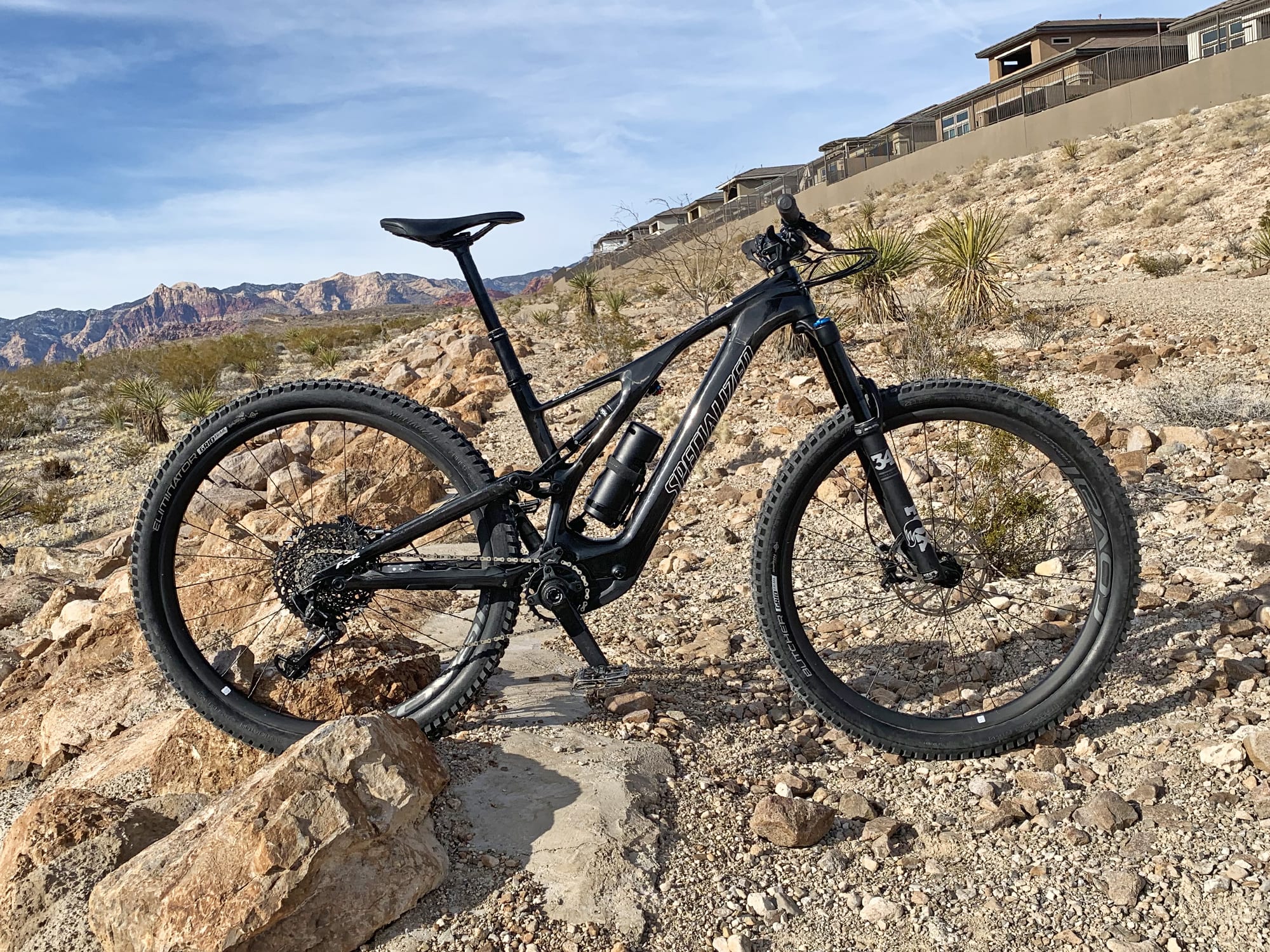
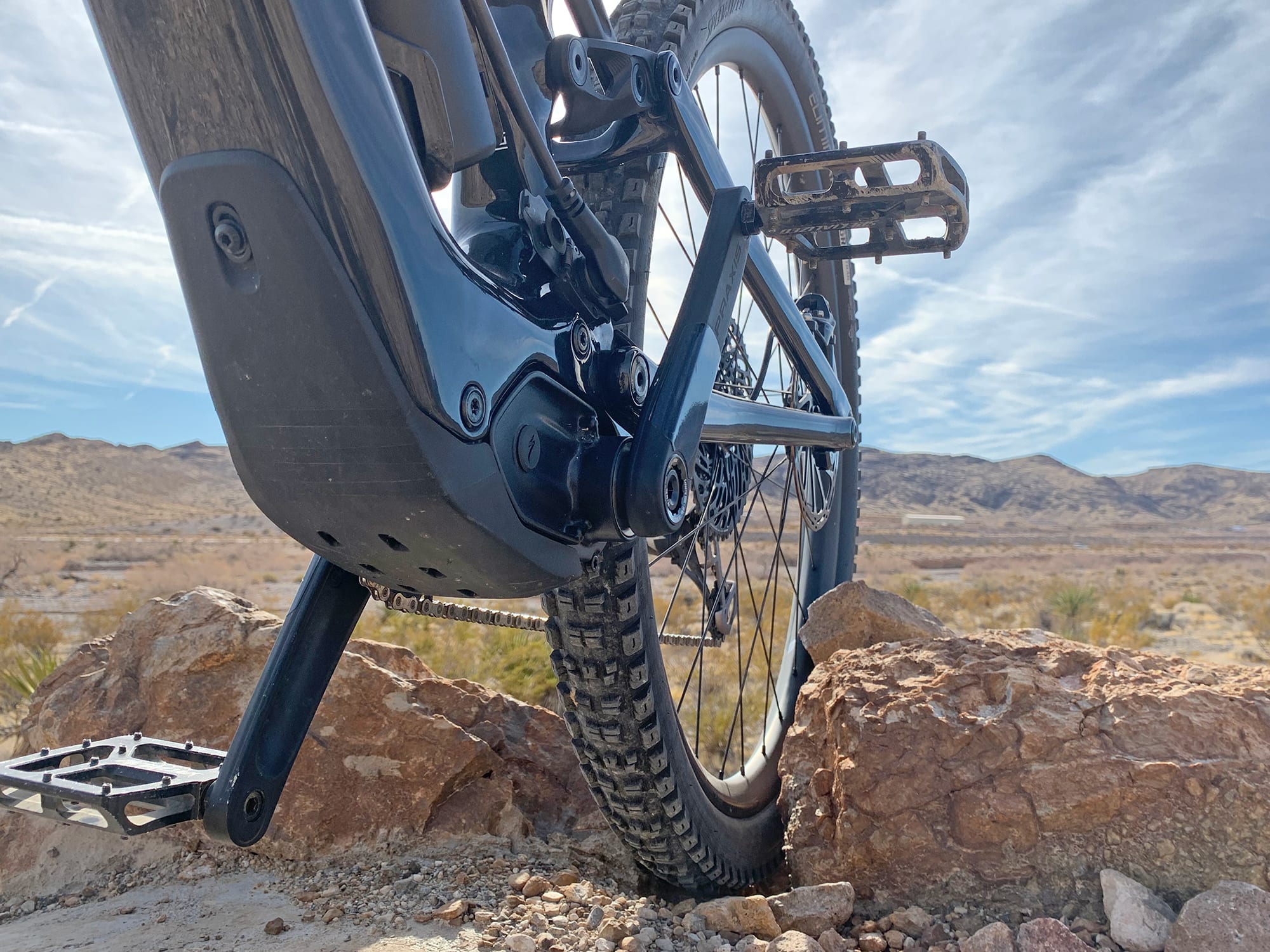
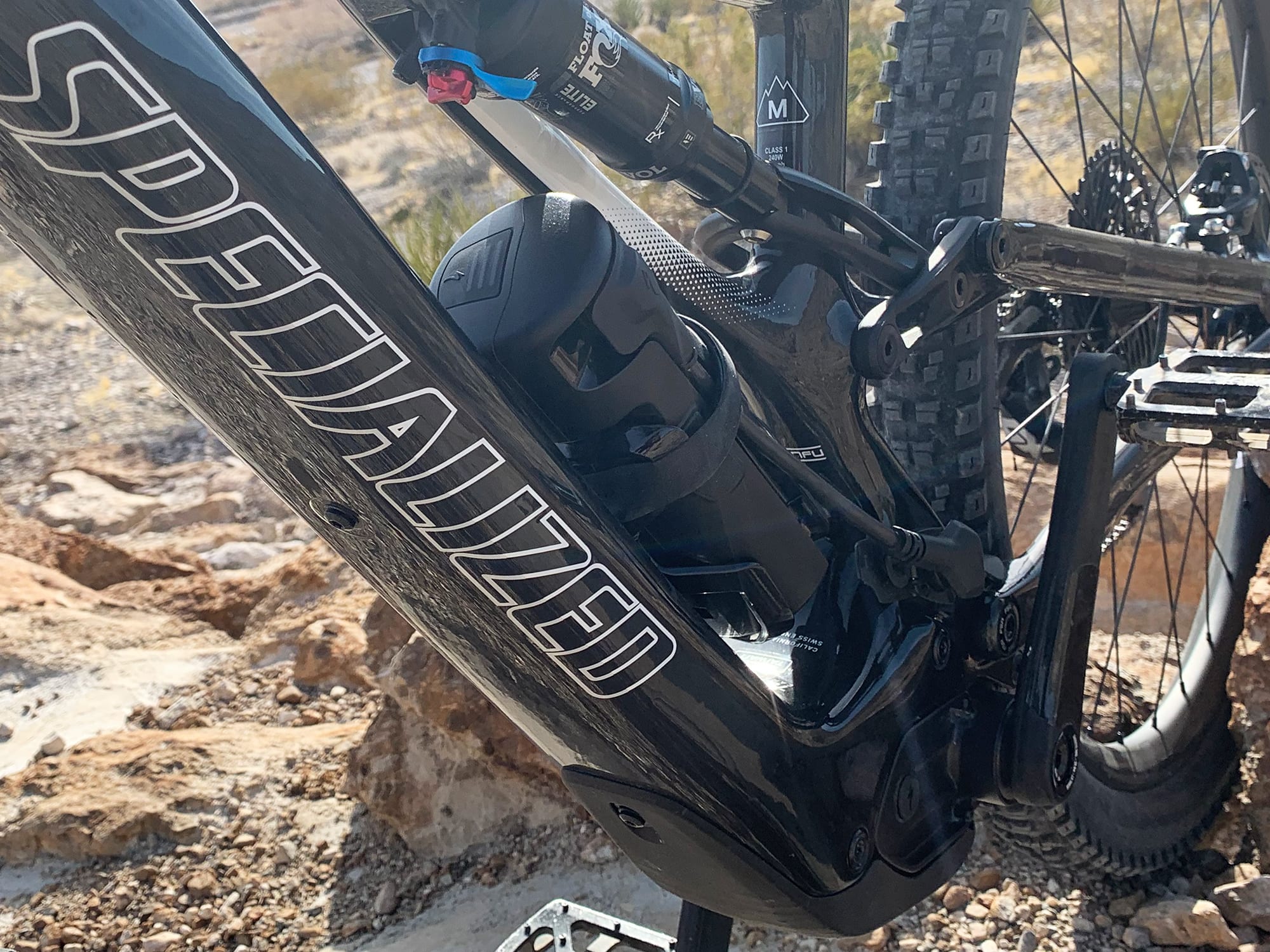
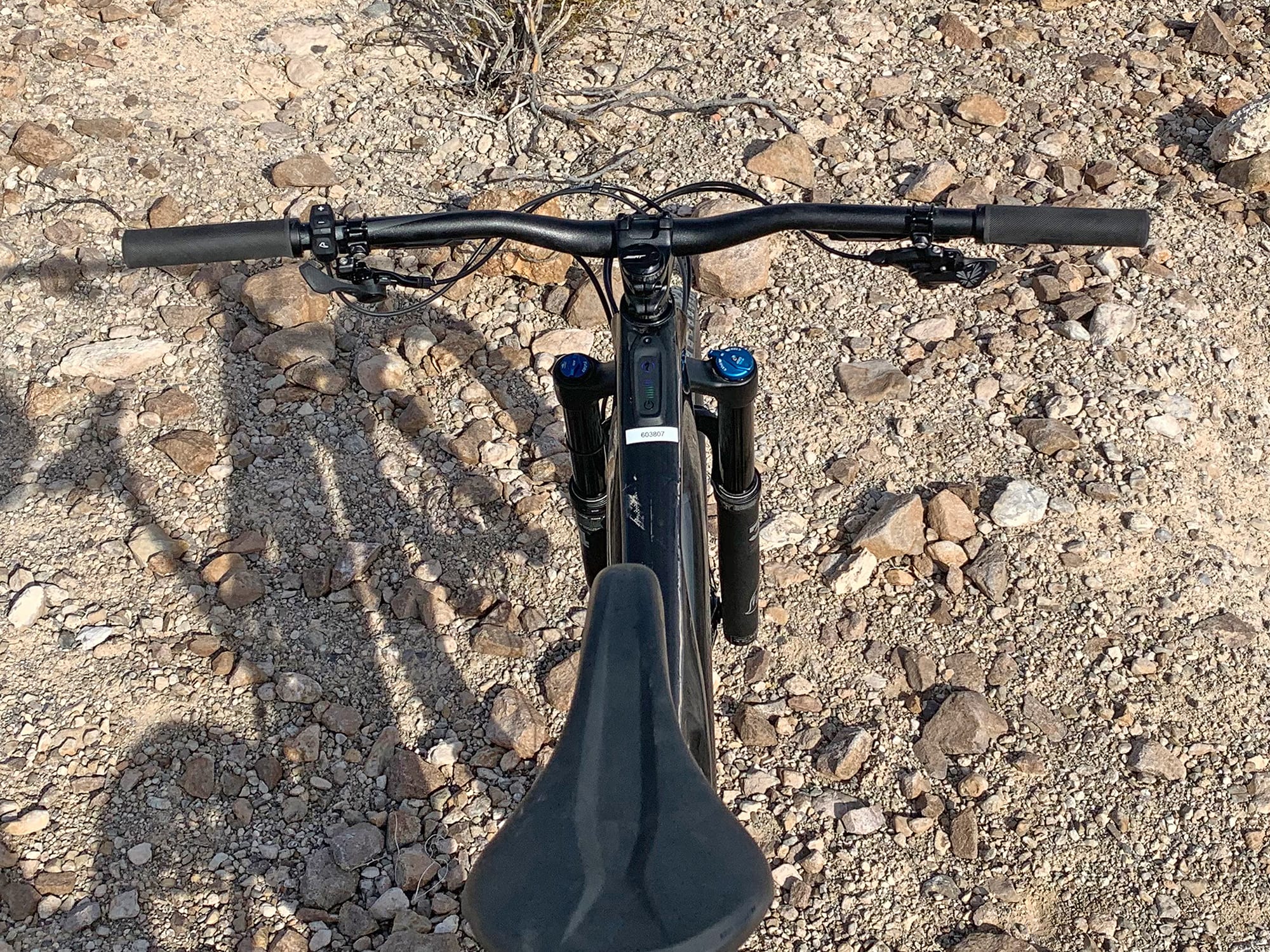
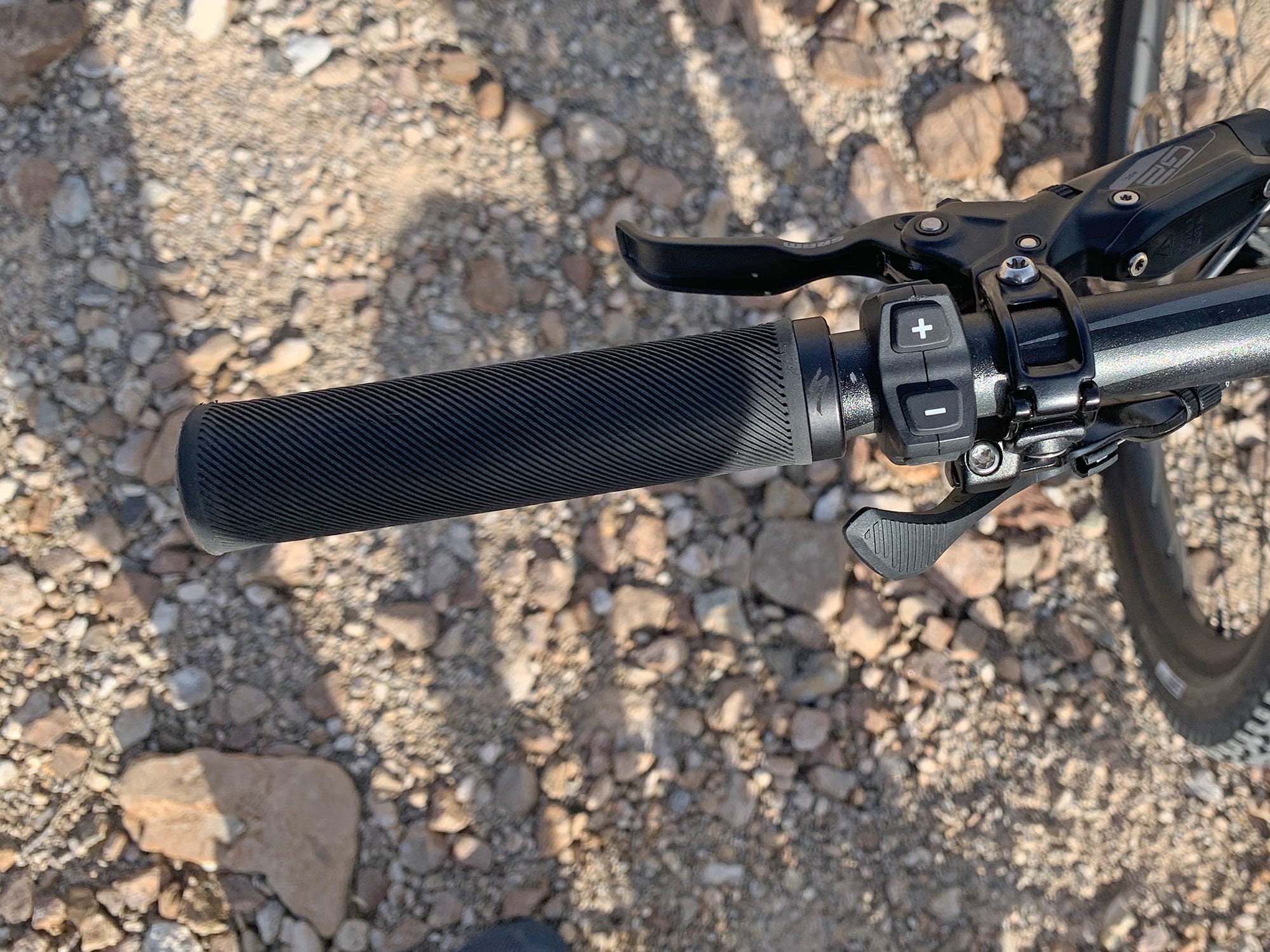

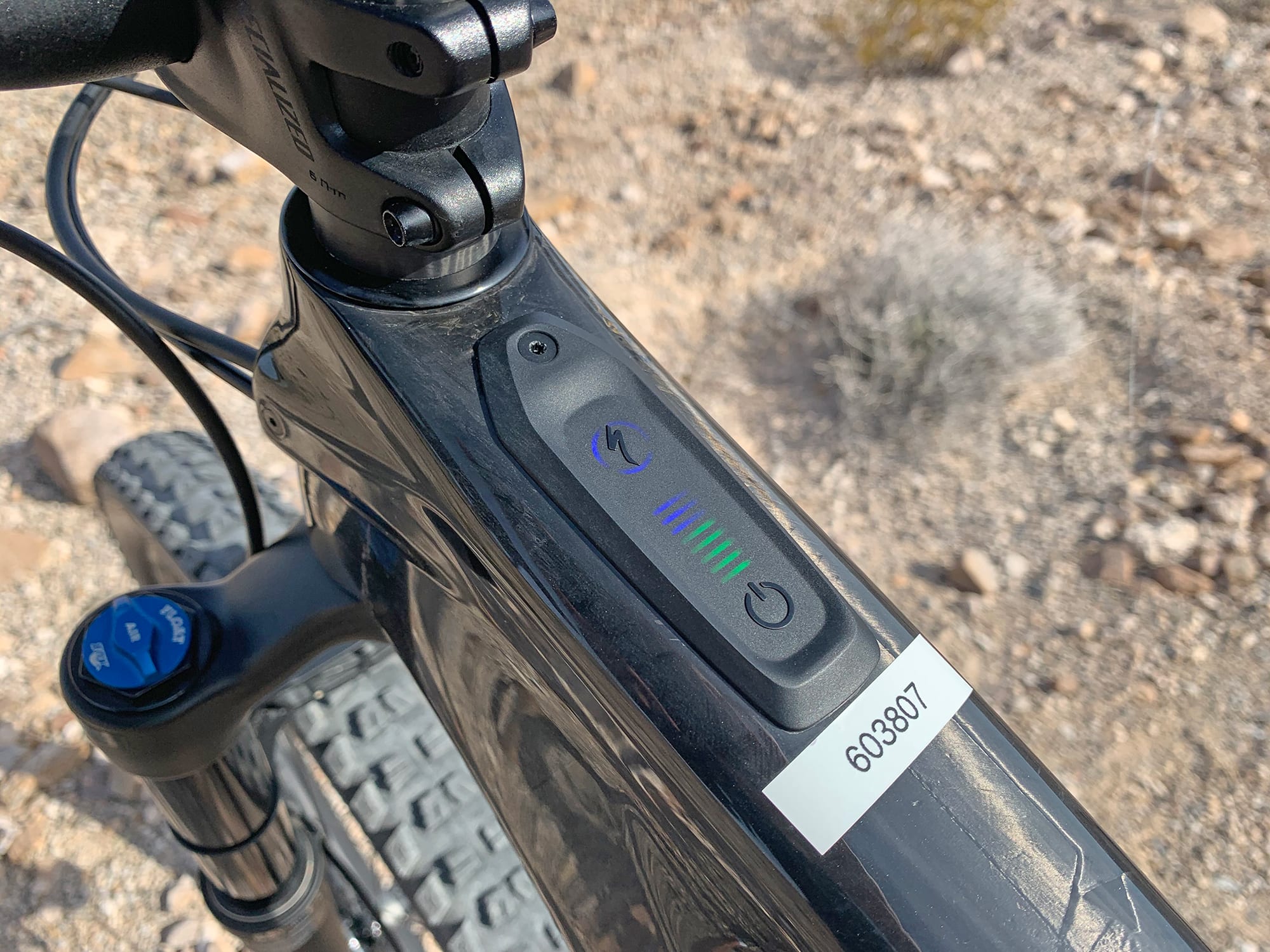

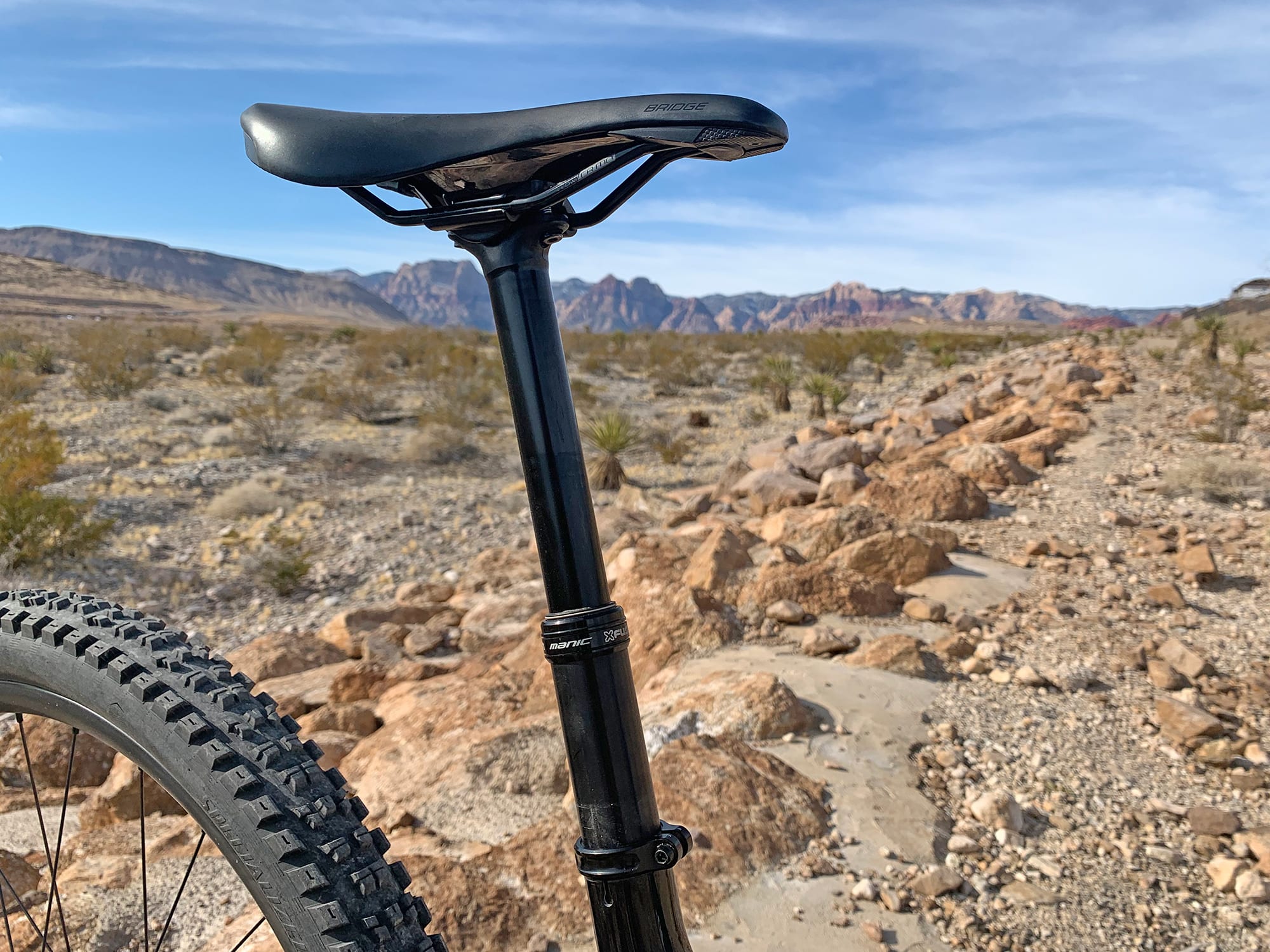
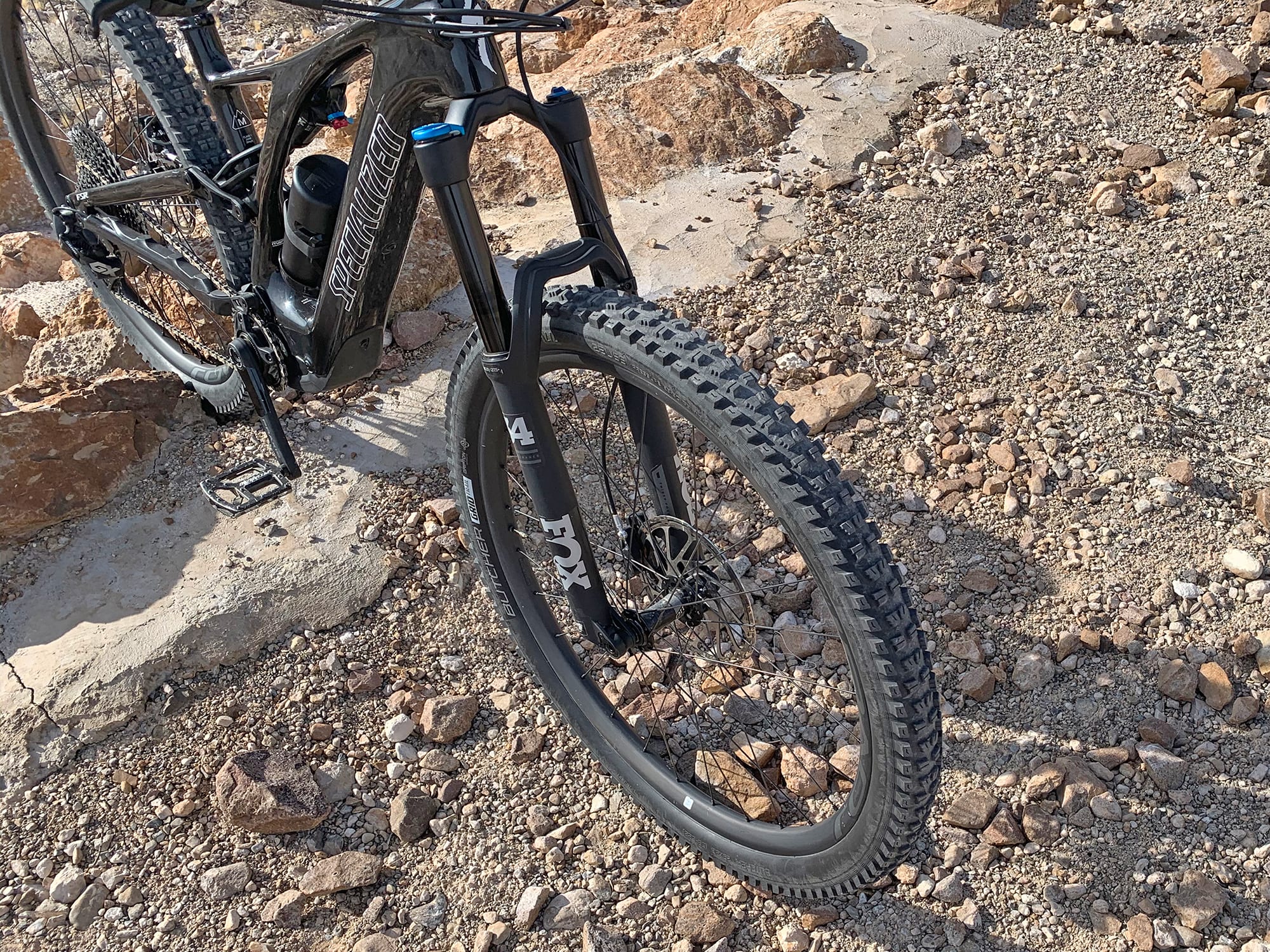
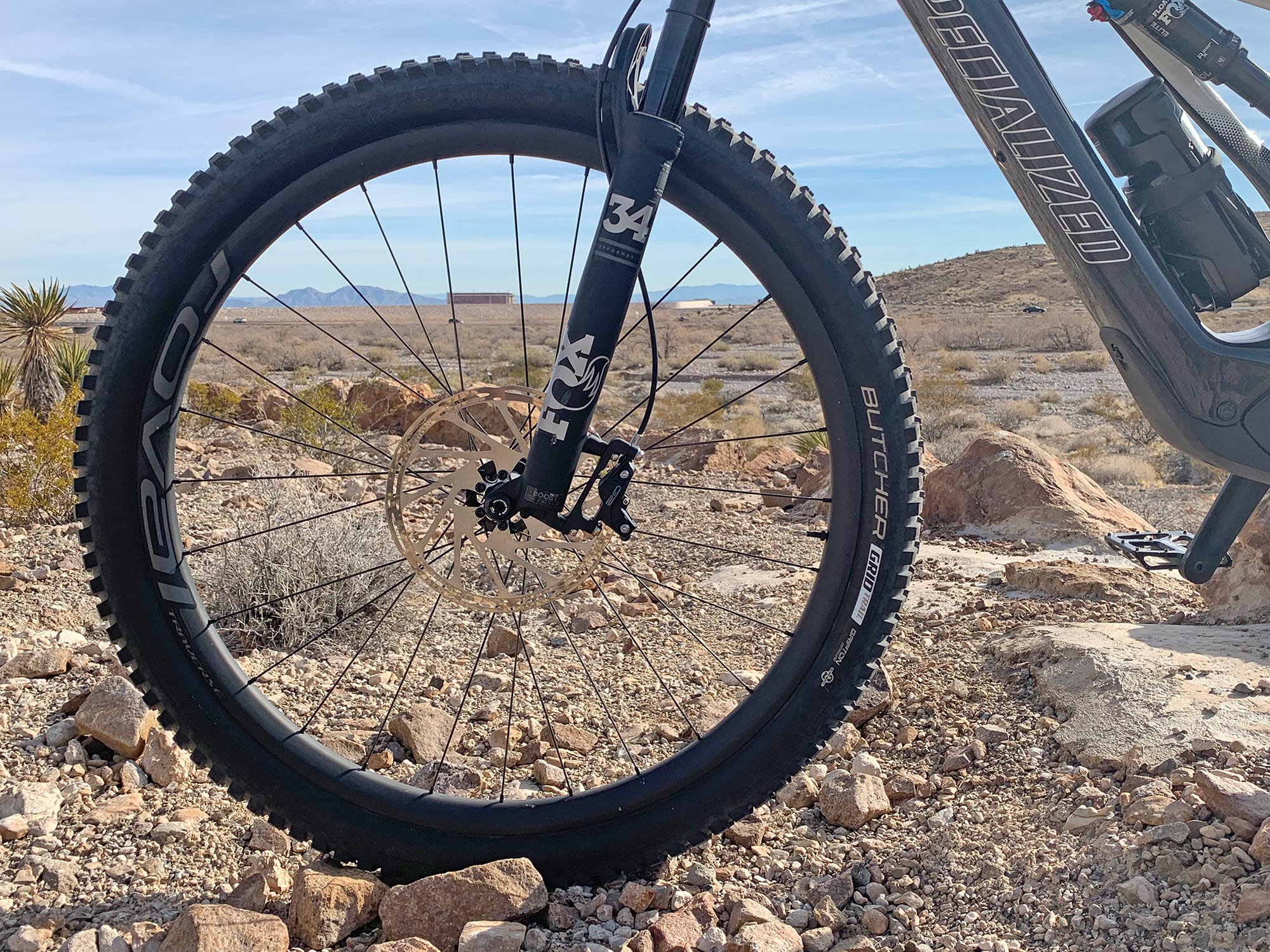
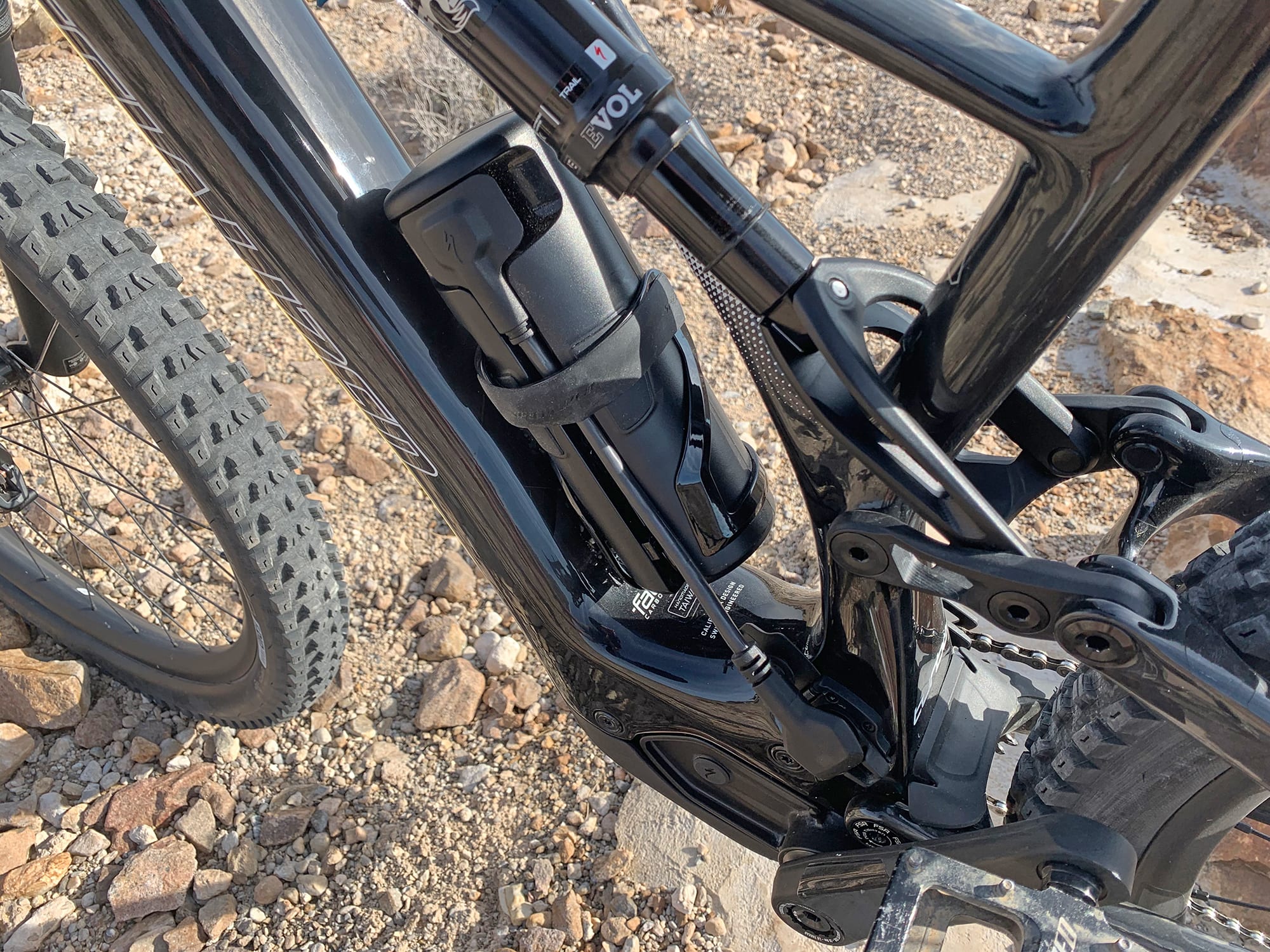
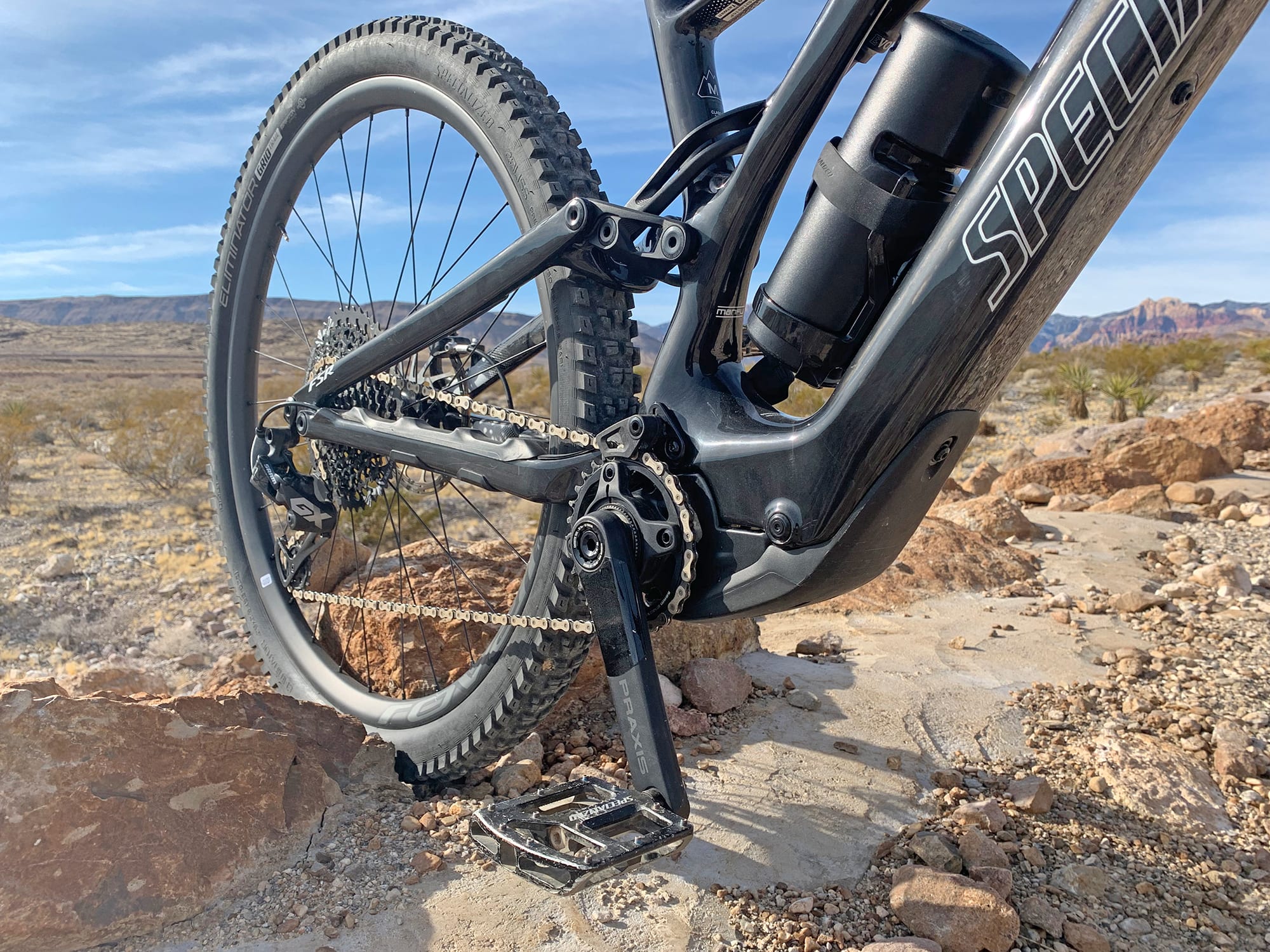
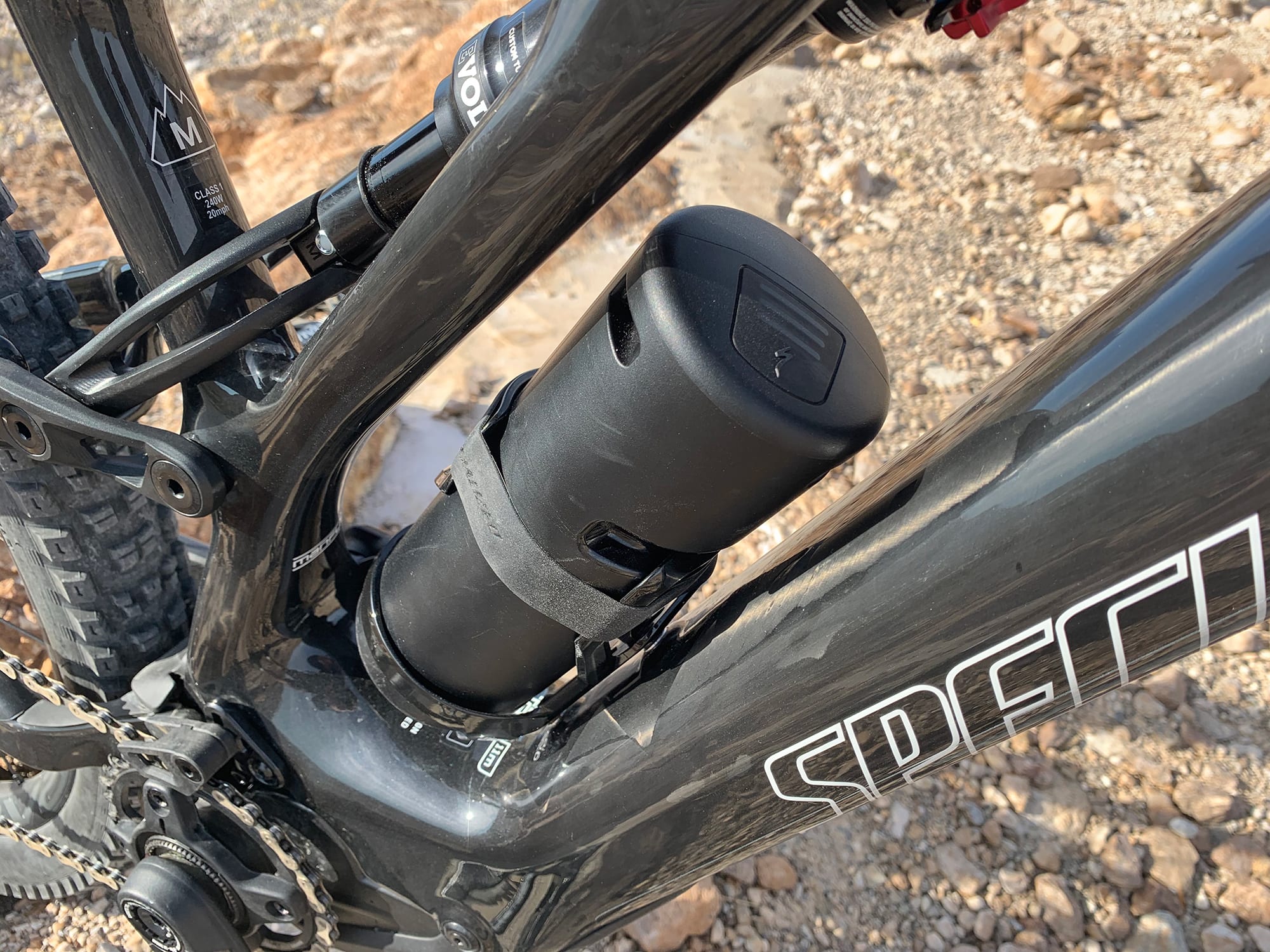

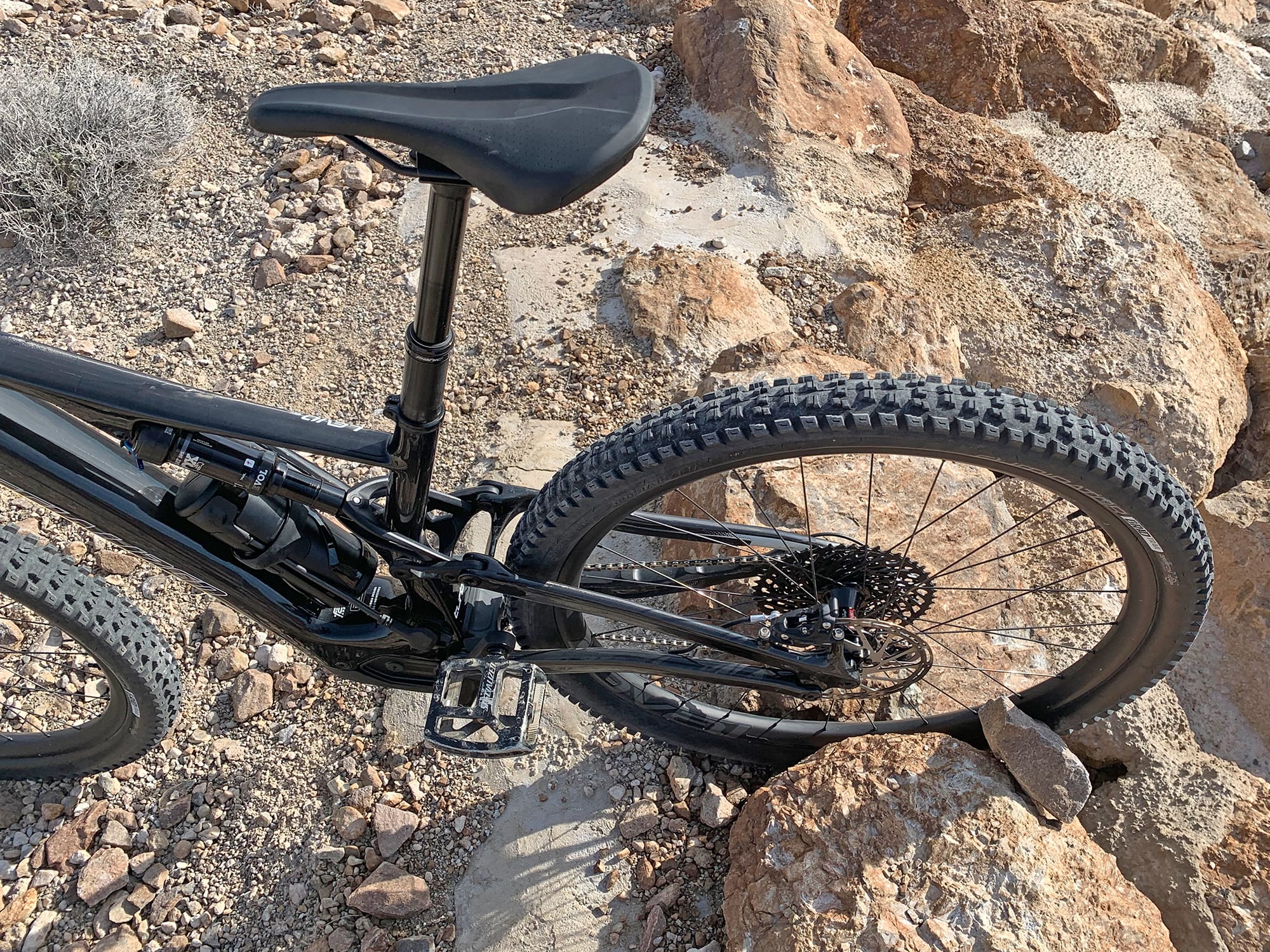

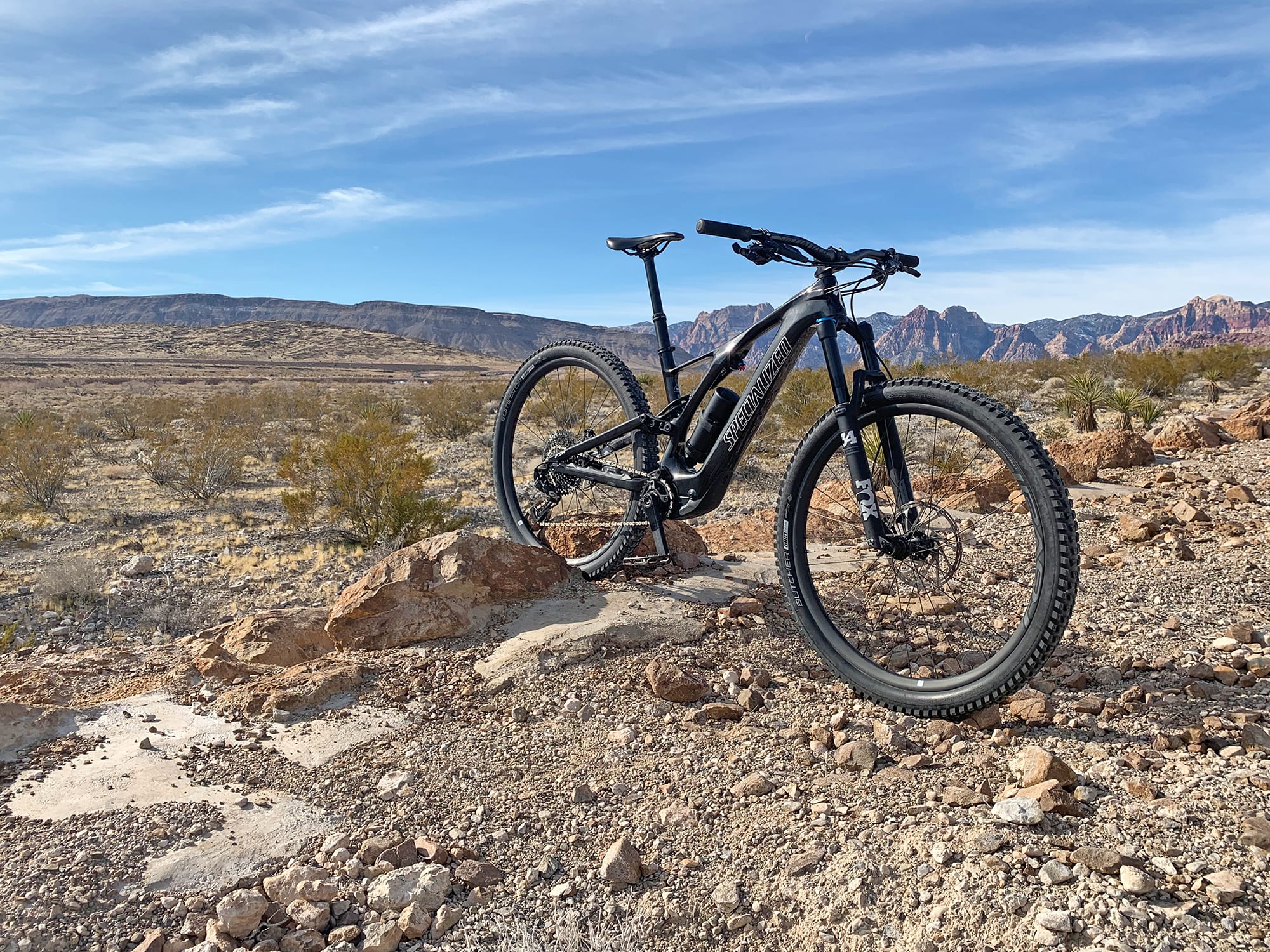
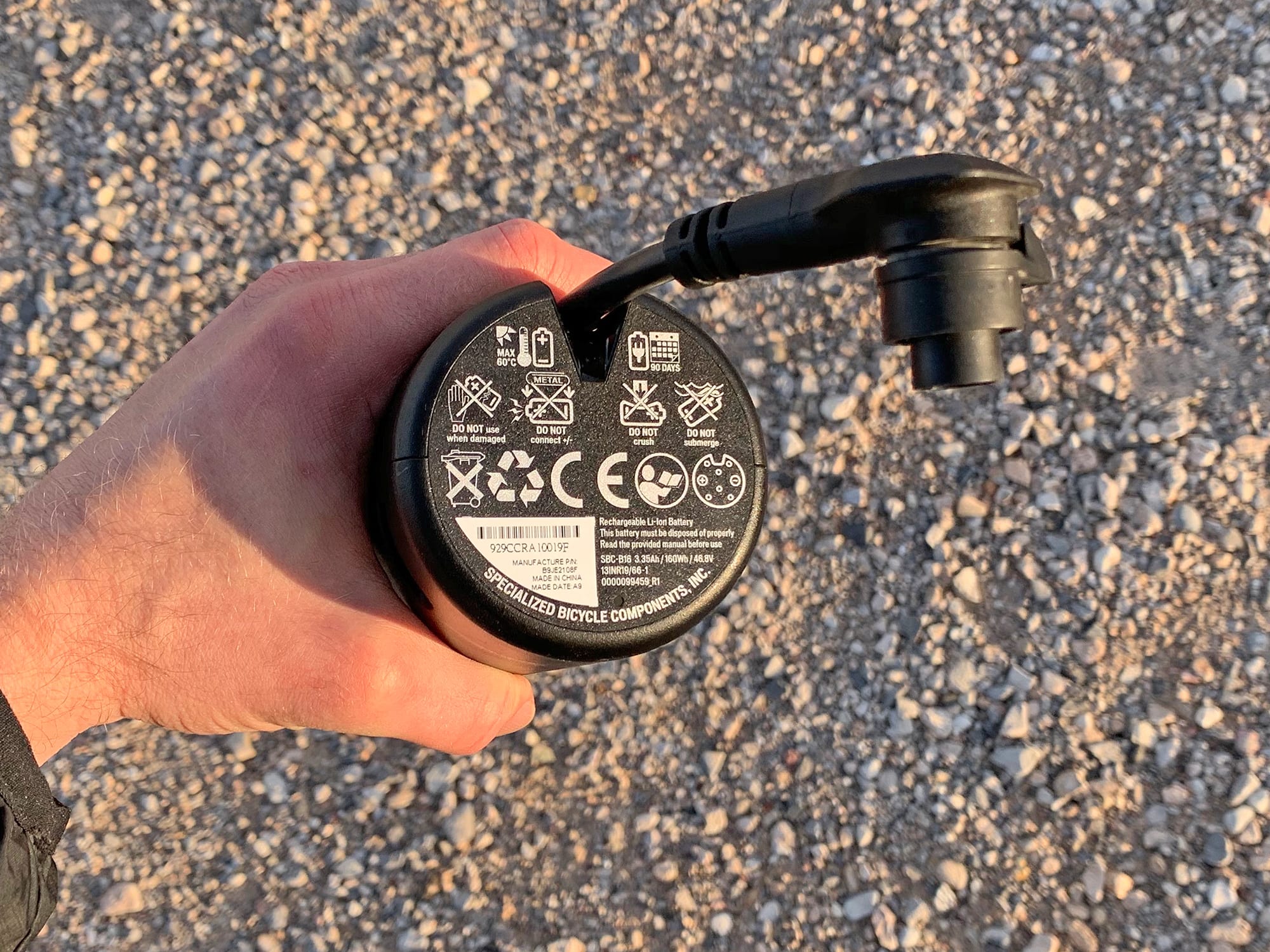
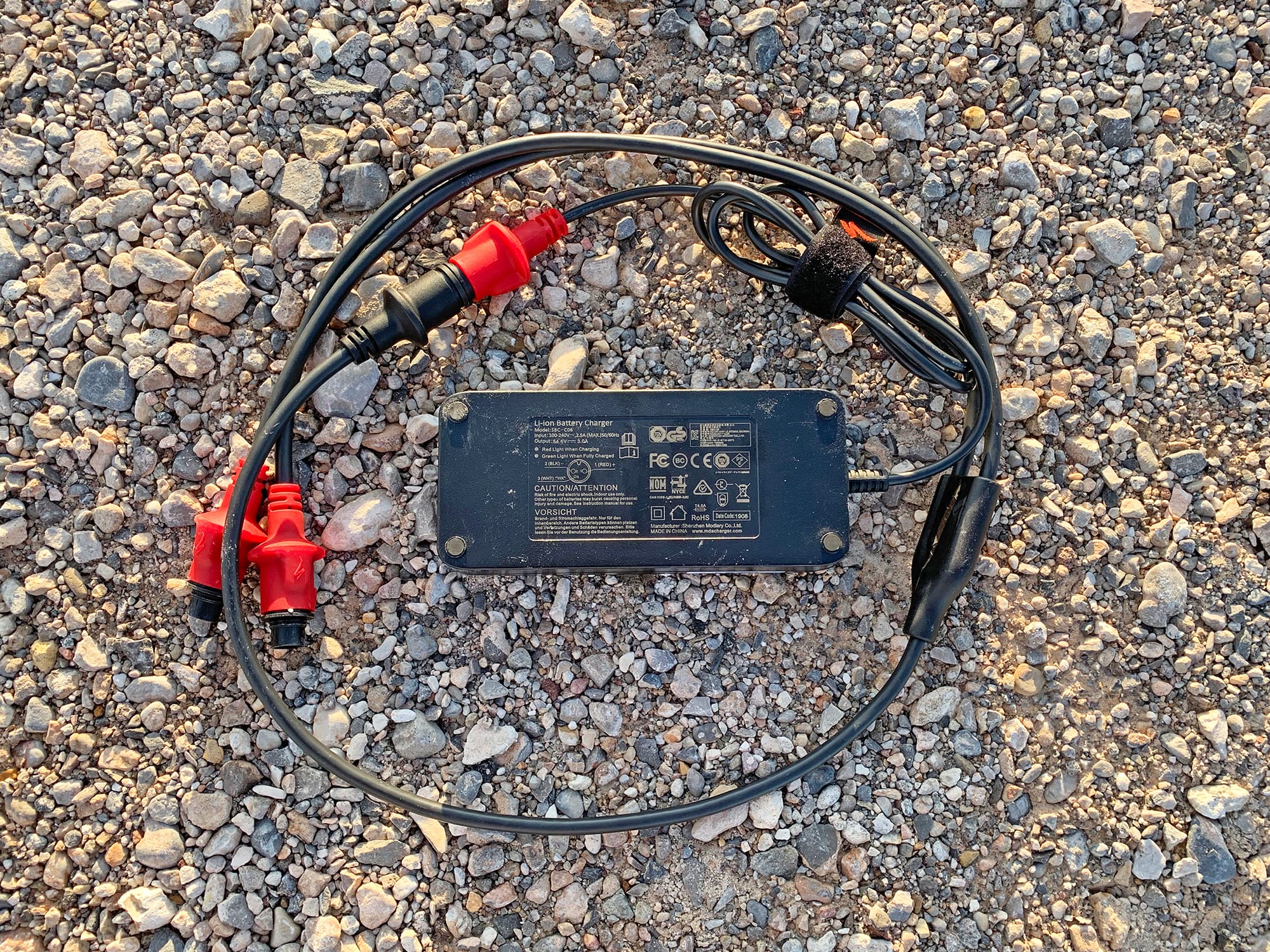


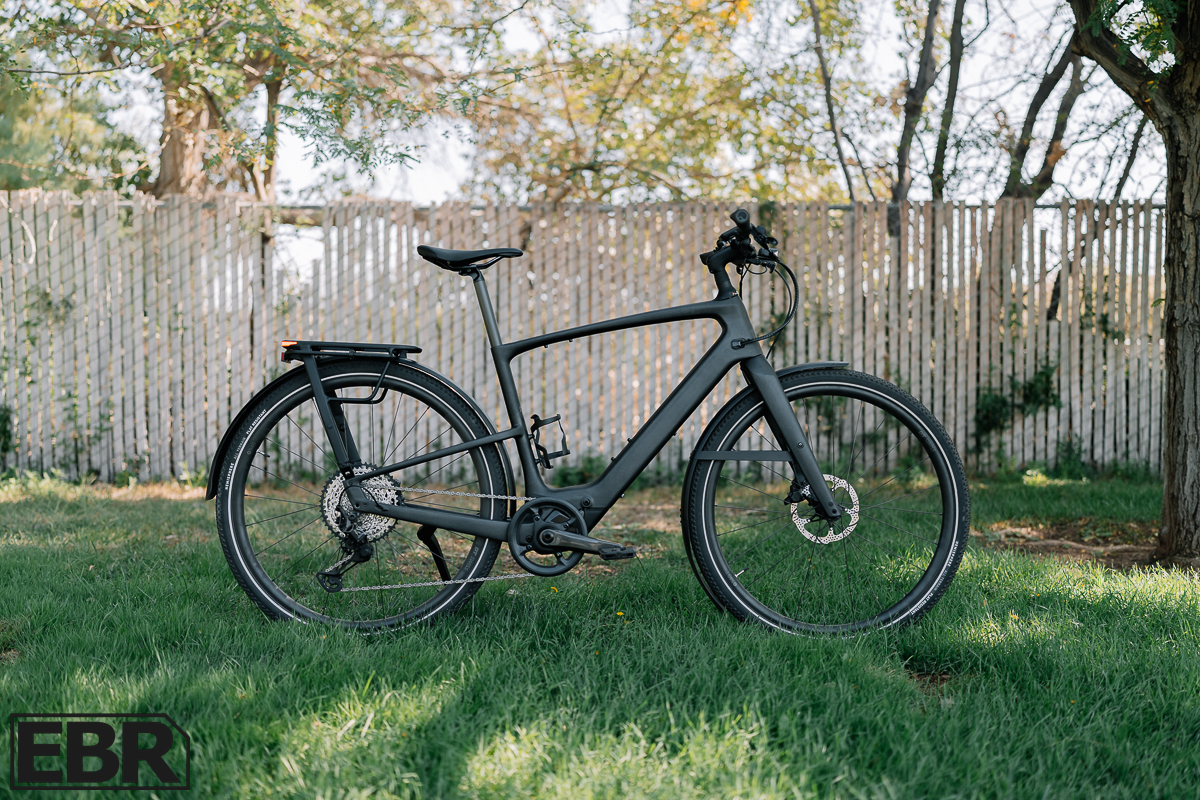
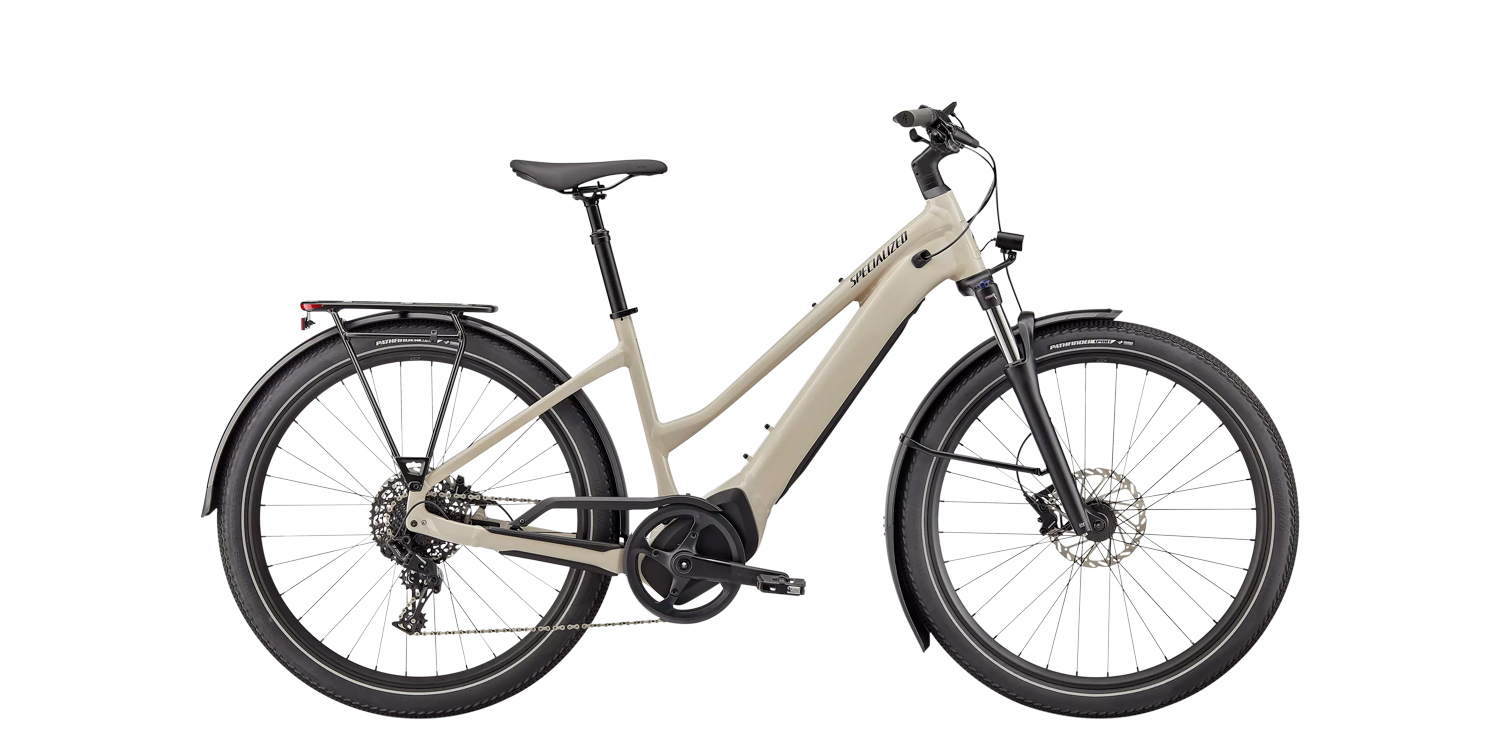
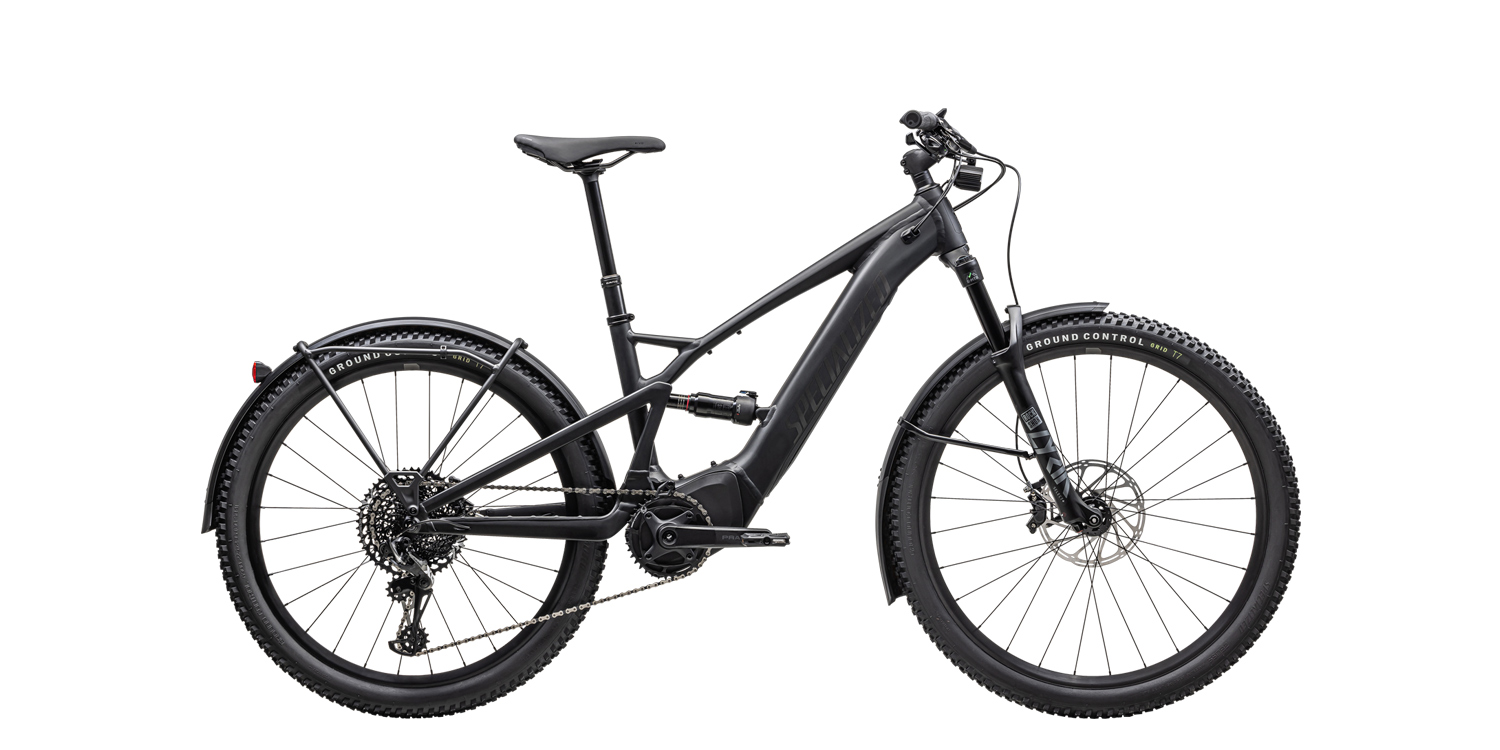
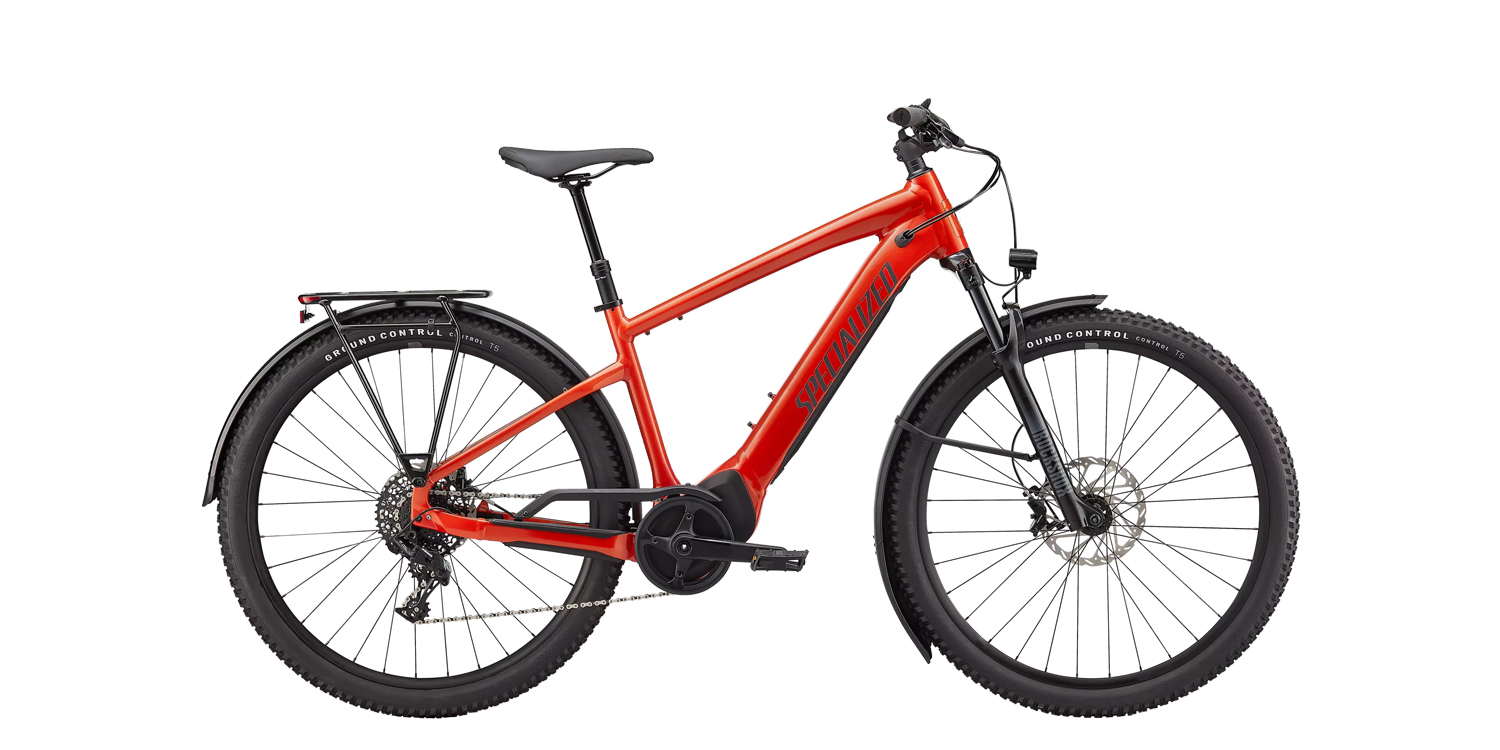
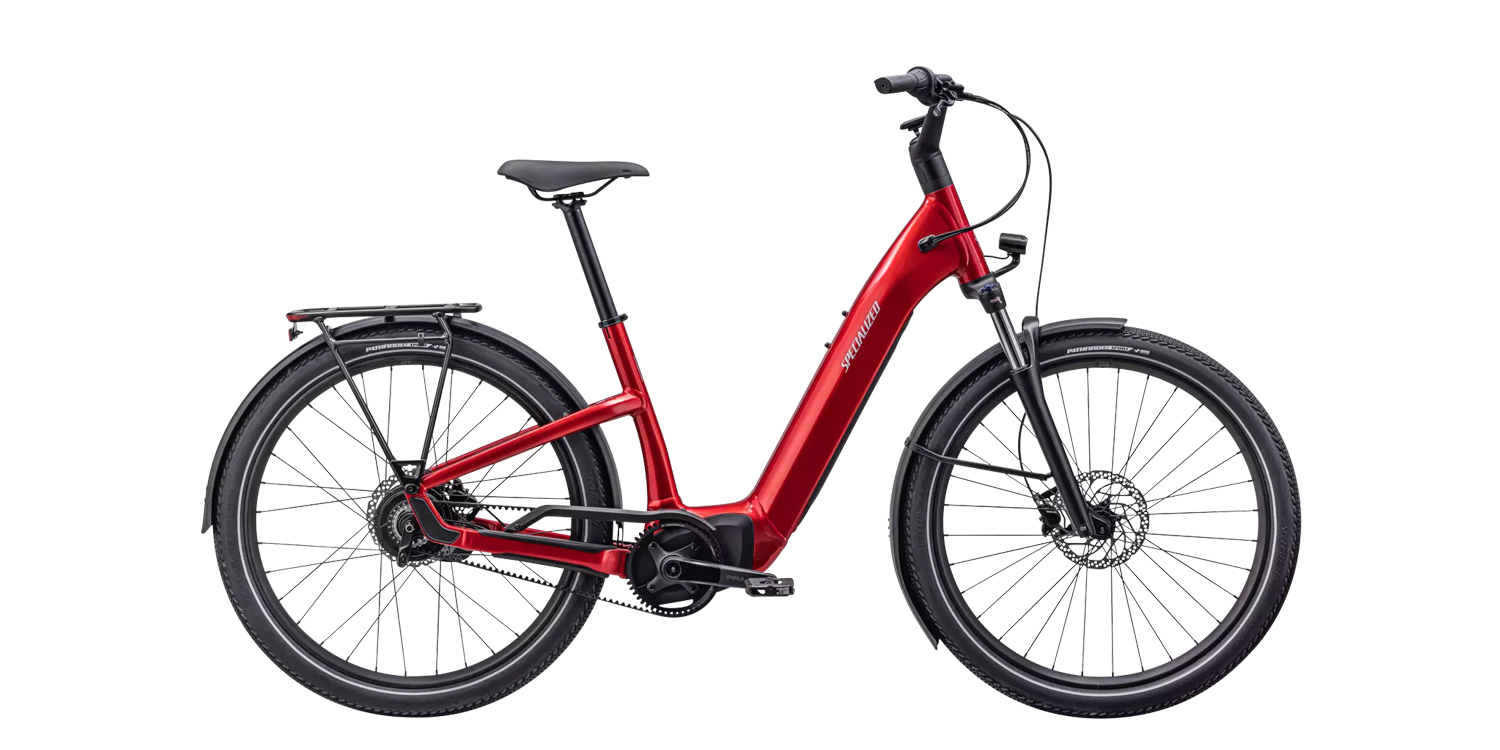
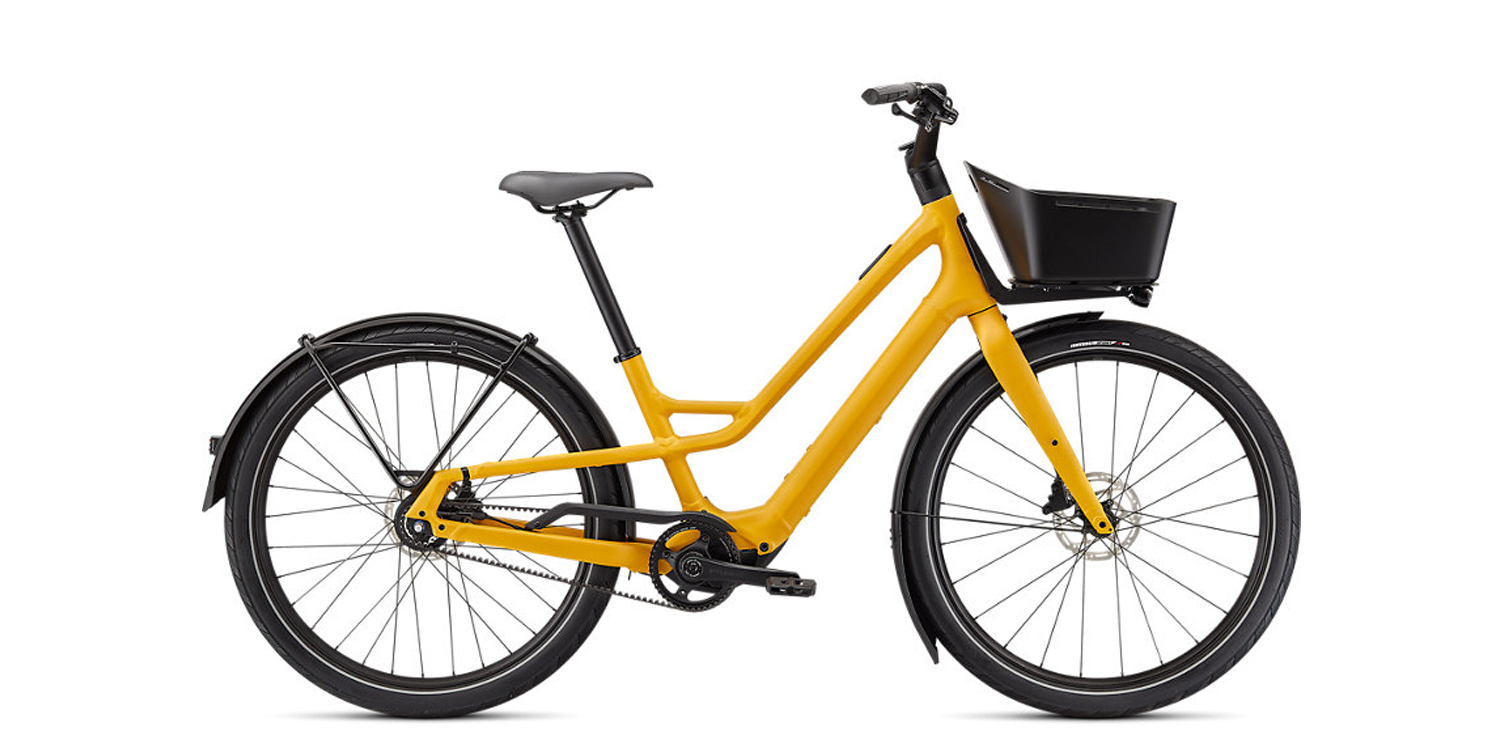
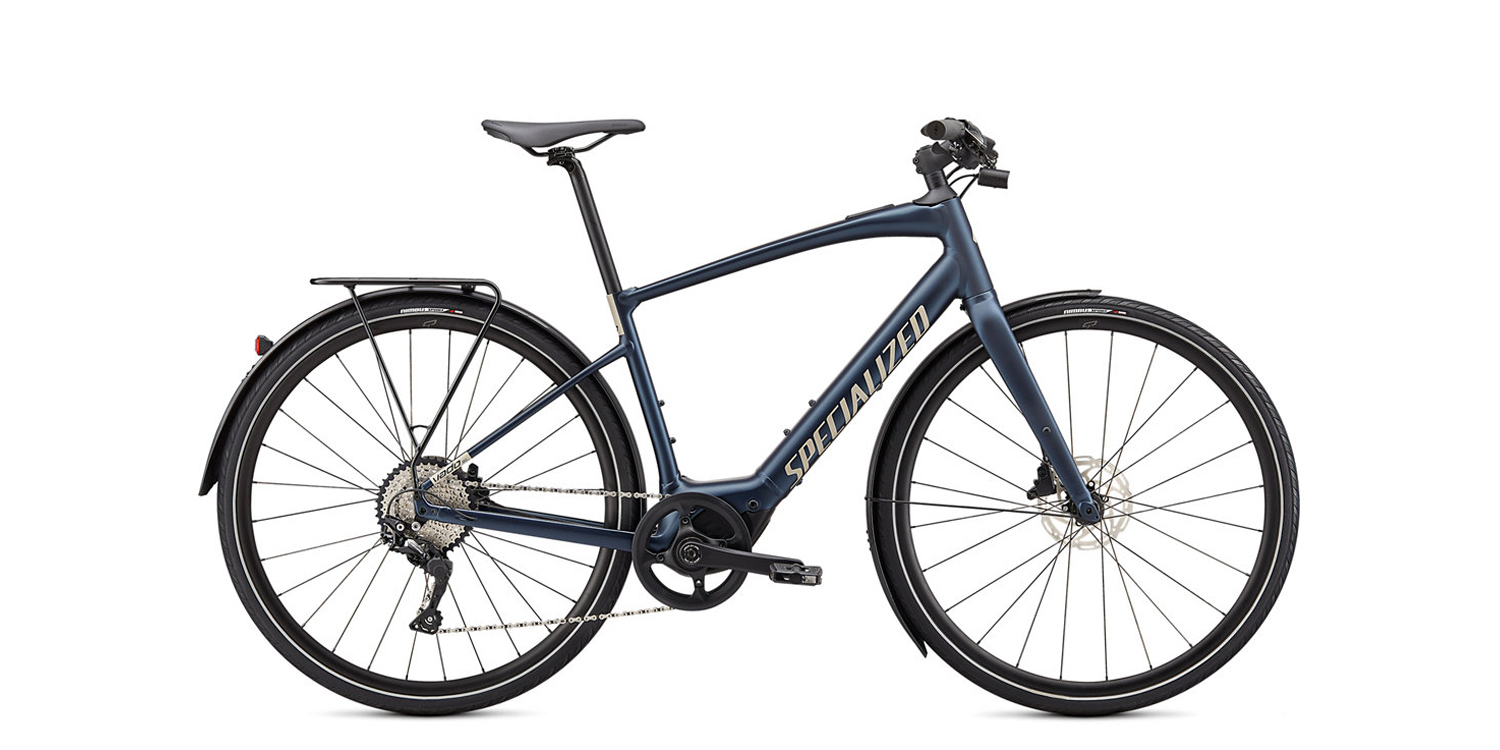
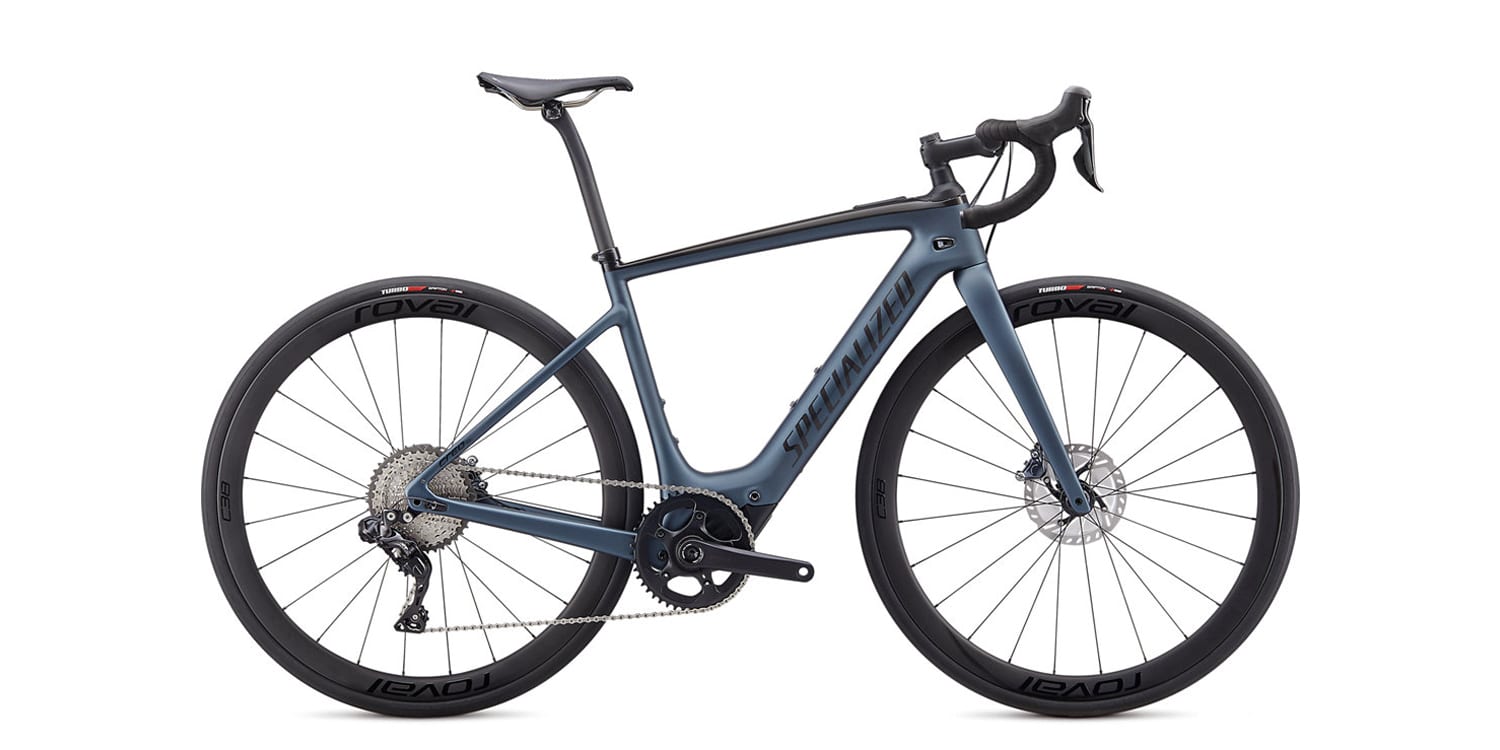
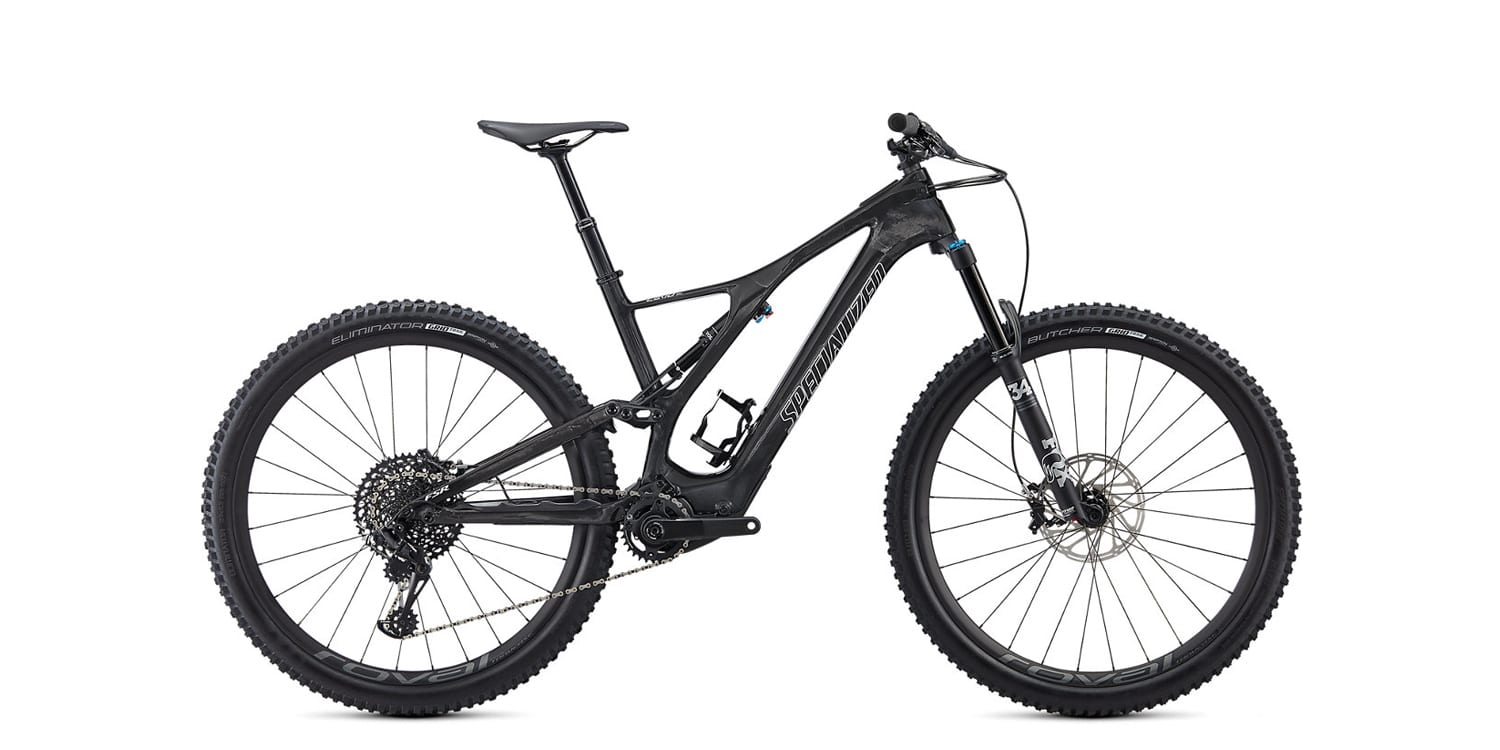
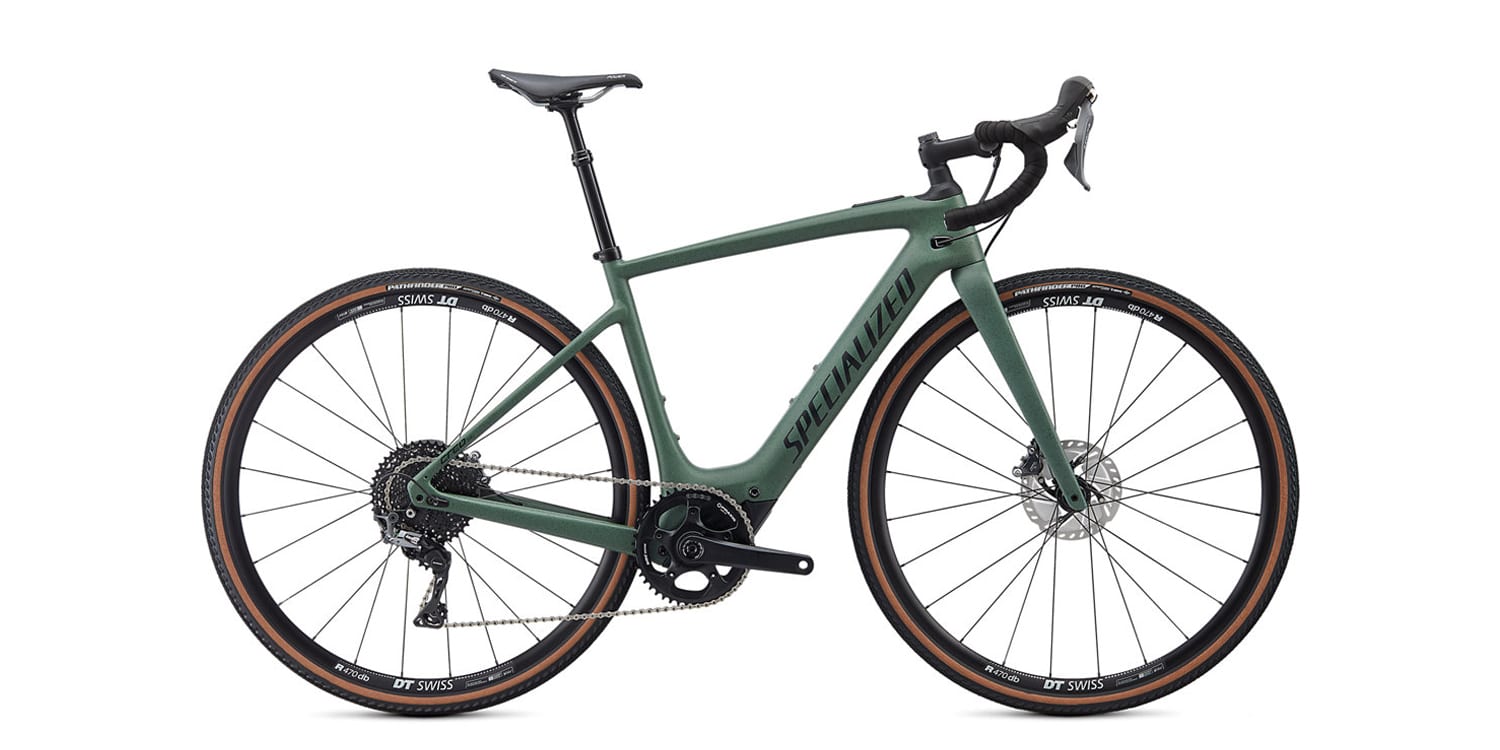
Shaggy says
Major concern is a Proprietary motor — no history on it and new technology is often problematic. $9,000 + we’re talking here! Bosch, for that much money, I’d feel more confidant spending.
Court, you didn’t mention Q-factor. Glad to see the white sunglasses back!
Court says
Hi Shaggy! Great catch, I wasn’t given that information before filming, but was able to hunt it down a week after… They technical lead at specialized, who seemed to know the most about this new drive system by MAHLE told me that the Q-Factor is 181mm. I hope they support this new system, and that it proves to be reliable, because it’s quite fun :D
MAC says
I have a question on your comment above, “There’s no reduction gearing or drag here, when riding completely unassisted or pedaling beyond the supported 28mph (45km/h) top speed, the bikes feel really smooth and natural vs. having a big “wall” cutout feeling. I tested several models without assist and still enjoyed riding.”
It’s a Class 1 but will still assistance above 20MPH? Can you quantify how much it gives. Feel free to direct reply. Thank you. Keep up the great work!
Court says
Hi MAC! Sorry man, that was totally a typo. This is a Class 1 model, so it only goes to 20mph (32km/h) but the cutout is still smooth and natural feeling. You can get faster Class 3 models from Specialized, but only in the road models like the Vado SL and Creo SL.